Port ships are becoming L.A.’s biggest polluters. Will California force a cleanup?
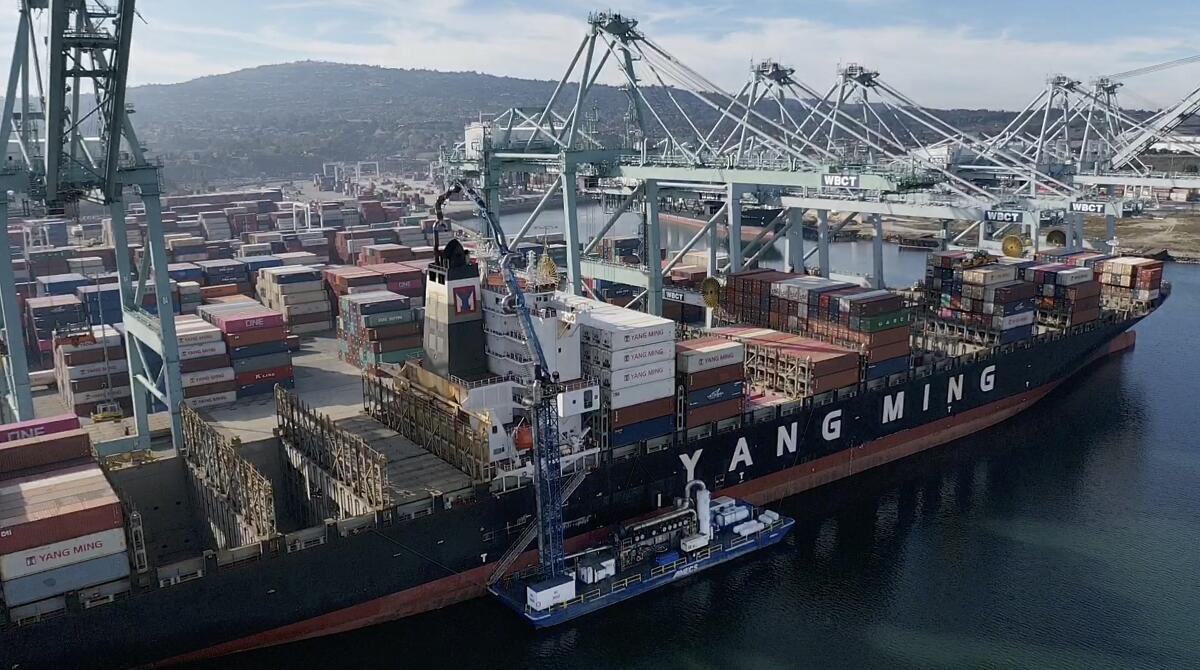
- Share via
Ships visiting Southern California’s bustling ports are poised to become the region’s largest source of smog-causing pollutants in coming years, one reason state regulators want to reduce emissions from thousands more of them.
Air quality officials want to expand the number of ships that, while docked, must either shut down their auxiliary engines and plug into shore power or scrub their exhaust by hooking up to machines known as bonnets or “socks on a stack.”
But some neighbors of the ports say the California Air Resources Board is not moving fast enough to cut a rising source of pollution. Some also fear that the shipping industry and the ports of Los Angeles and Long Beach will use their clout to weaken the proposed restrictions, which the Air Resources Board will decide on in the first half of the year.
“We need relief; it’s just that simple,” said Theral Golden of the West Long Beach Assn., a neighborhood group that has long fought for cleaner air in a community that is among the hardest hit by port pollution.
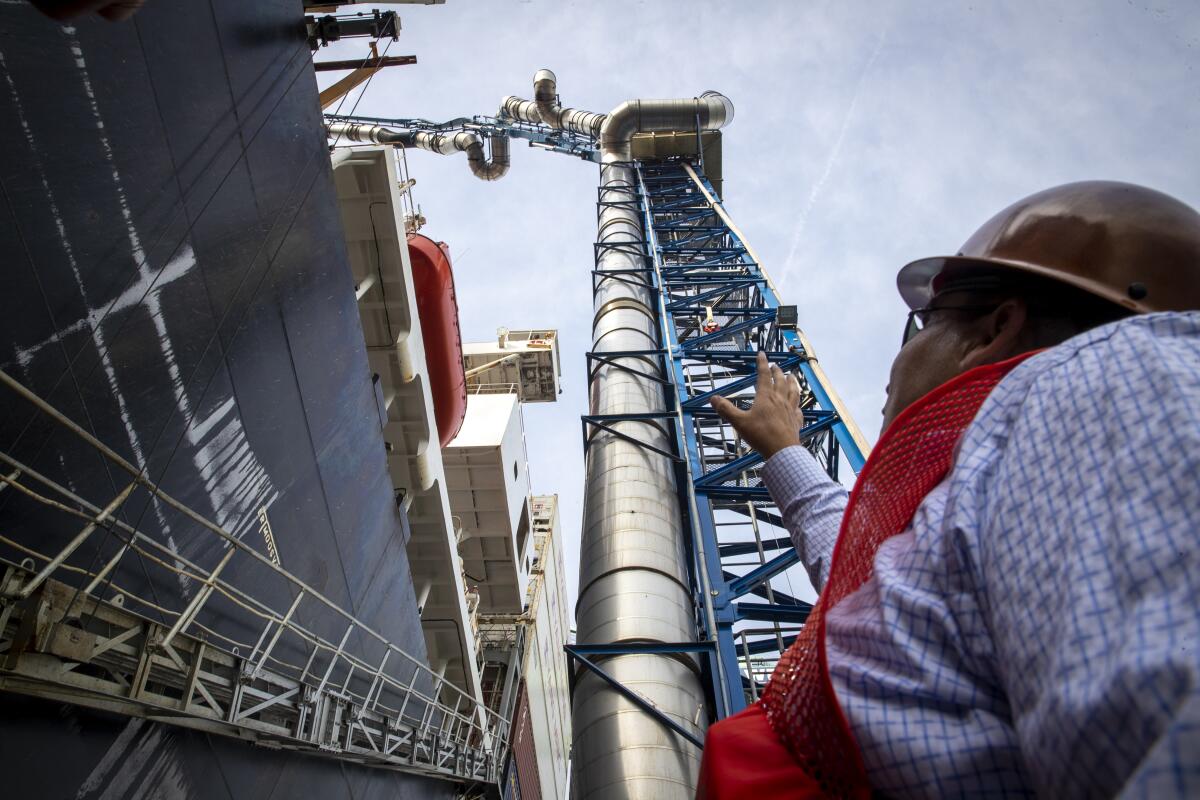
At stake in the battle are billions of dollars in potential costs at the nation’s busiest seaport, which handles roughly 40% of U.S. imports and remains overwhelmingly powered by diesel-spewing trucks, ships, locomotives and cargo-handling equipment. The volume of shipments moving through the two ports has more than tripled since the mid-1990s, supporting hundreds of thousands of jobs.
But the growth in shipping activity also comes at the cost of people’s health across Southern California, especially near the ports. Despite dramatic emissions cuts by the ports in recent years, neighboring communities such as Wilmington, San Pedro and West Long Beach still have the region’s highest cancer risk from air pollution and higher rates of asthma compared with the rest of the state.
“Right now we have larger ships carrying more cargo, and they’re bringing more pollutants,” Golden added. “We understand that cargo has to move and goods have got to be moved. But it should not be at the expense of our health, and at the expense of our children.”
It was more than a decade ago when the L.A.-Long Beach ports pioneered a major effort to clean up their operations by phasing out their dirtiest sources of diesel pollution. State regulations over the last six years have forced increasing numbers of container ships, refrigerated cargo ships and cruise ships docked at the largest ports to plug in or to connect to emissions controls. But the rules do not apply to more than half of the 8,000 ocean vessels visiting California each year, according to figures provided by the Air Resources Board.
The Air Resources Board proposes to extend such restrictions to additional ports, ship calls and and vessel types, including tankers and roll-on/roll-off ships, which carry cars, trucks and other vehicles. The rules would increase the number of ship visits subject to the rules from about 43% today to about 71% by 2029, air board figures show.
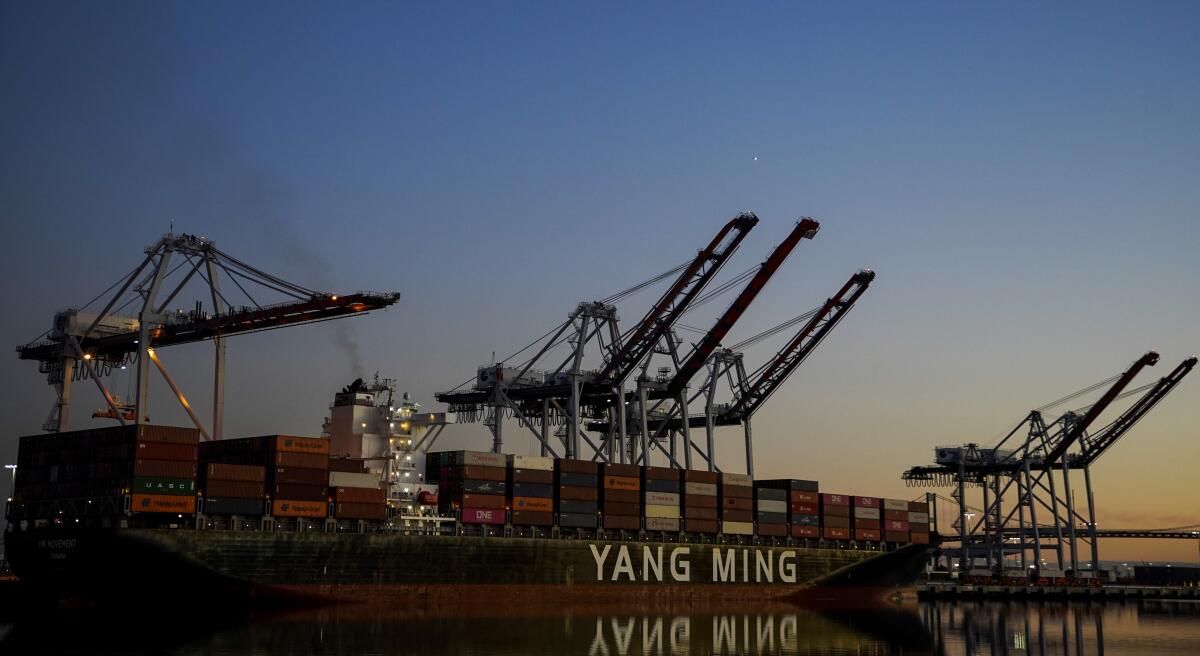
Largest polluters in L.A.
Some of the vessels at issue are so large they are like floating warehouses or small cities. If not plugged in while docked, they must keep their engines and boilers running. In one 24-hour period in port, a single cruise ship can burn enough fuel oil to equal the pollution from 10,000 cars, according to air quality officials.
But plugging in such hulking, power-hungry vessels isn’t simple.
On a recent weekday, diesel exhaust billowed skyward from the stacks of the Yang Ming Movement, a fully loaded container ship that rumbled into the Port of Los Angeles after its journey from Shanghai.
It took half a dozen workers and two hours to connect the 960-foot-long ship to the electrical grid. Crew members slowly lowered electric cables as thick as fire hoses down the side of the vessel to longshoremen who attached the red and blue plugs, weighing 30 pounds each, into receptacles on the dock. Port electrical workers flipped two giant switches so the ship could begin drawing from the grid.
“She will run on electricity from shore power for the entire stay,” says Bill Schopp, director of marine operations for TraPac terminal in Wilmington, where the vessel docked for nearly five days.
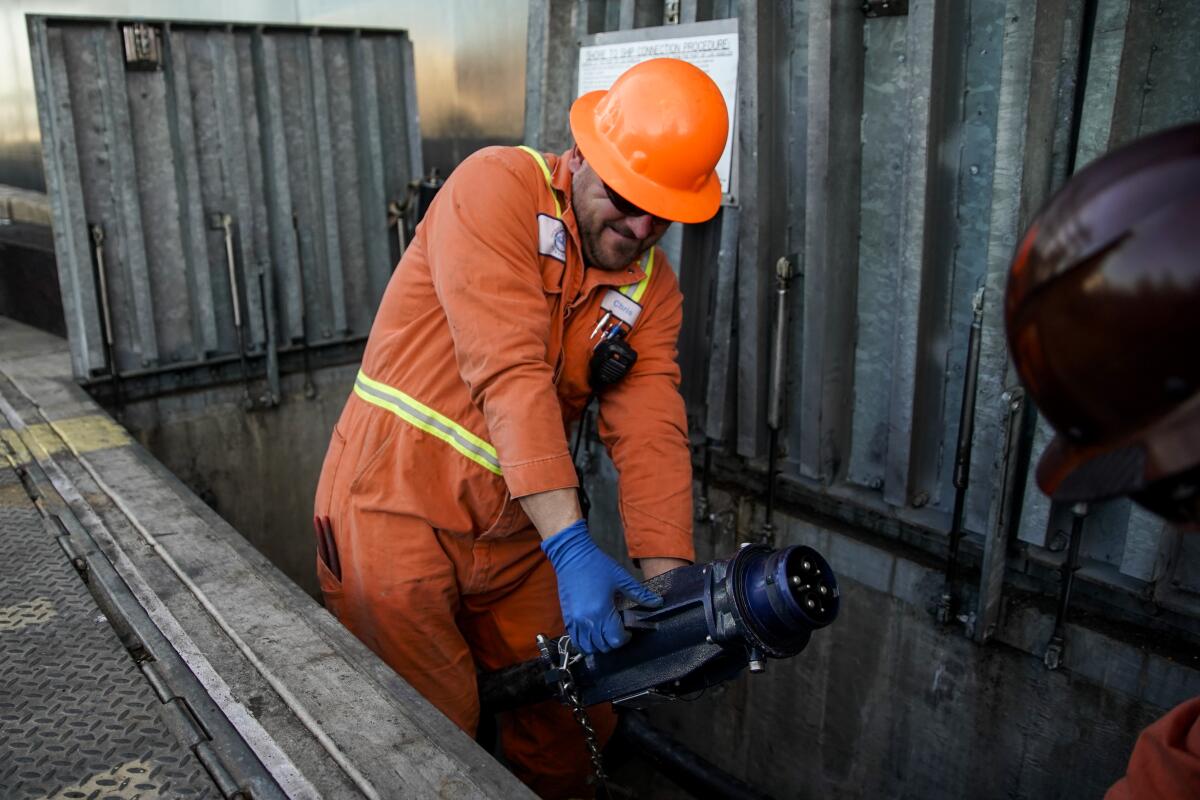
California made early gains at its ports more than a decade ago with rules that required vessels to switch to cleaner low-sulfur fuel near the shore. But in recent years, progress in fighting air pollution at the L.A.-Long Beach ports has waned, with some emissions creeping upward. In 2018, emissions of diesel particulate matter rose slightly at the Port of L.A. and has ticked up the last two years at the Port of Long Beach, according to their inventories.
The South Coast Air Quality Management District projects that by 2023 oceangoing ships will surpass heavy-duty diesel trucks to become Southern California’s largest source of smog-forming nitrogen oxide pollution.
Amid concerns about backsliding on cleaning the air, leaders in L.A. and Long Beach in 2017 decided to overhaul their joint Clean Air Action Plan with an updated, $14-billion blueprint that seeks to switch to zero-emission cargo-handling equipment by 2030, and zero-emission trucks by 2035. The same year, the Air Resources Board instructed its staff to draft new shore power rules for ships that achieve “up to 100% compliance by 2030.”
The state predicts big improvements in health and air quality from strengthening the rules. By 2031, the rules are expected to slash emissions of diesel particulate matter and nitrogen oxides from docked ships by about half and reduce their contribution to cancer risk around the ports of Los Angeles and Long Beach by 55% over the same period.
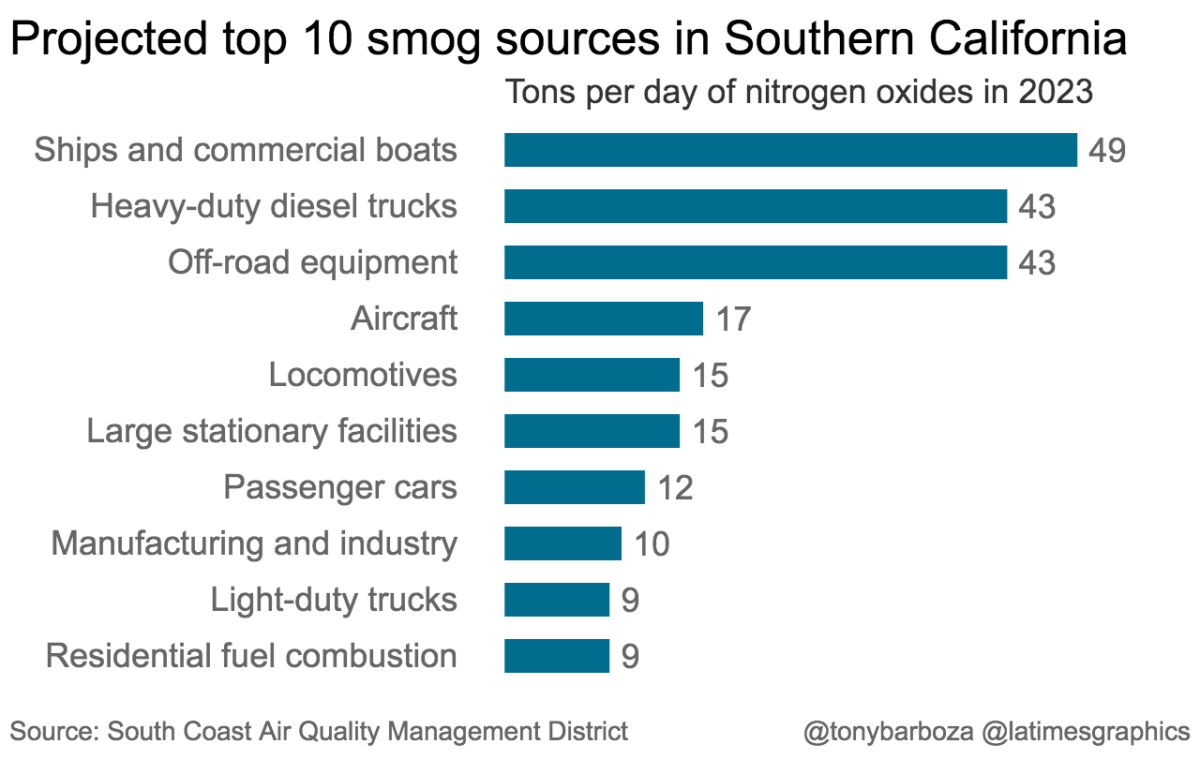
Community groups say they shouldn’t have to wait that long for those health benefits and want regulators to adopt a more aggressive timeline.
“Ships are massive polluters, and they have the most room to improve,” said Peter Warren of the San Pedro & Peninsula Homeowners Coalition. “They are also the right target to achieve the greatest gains because their movements are tracked and they can’t hide, and there are solutions to make them cleaner.”
Who pays?
Environmentalists and community groups in some of the hardest-hit neighborhoods argue the public has long paid for port-related emissions with their health. But the shipping industry has fought against tougher rules, which they argue would be too costly for the amount of pollution reduced.
“We don’t think we need a brand-new rule,” Mike Jacob, a vice president for the Pacific Merchant Shipping Assn., which represents ocean carriers and marine terminal operators, told state regulators at a hearing in Oakland last month. “We think we need to be making small administrative tweaks to a successful rule and make it even better.”
Outfitting one ship with the equipment to plug into shore power costs $1 million or more, according to industry representatives. They argue this price tag isn’t cost effective for ships that rarely make stops in California; they say they’ll need more shore-based emissions capture systems to comply.
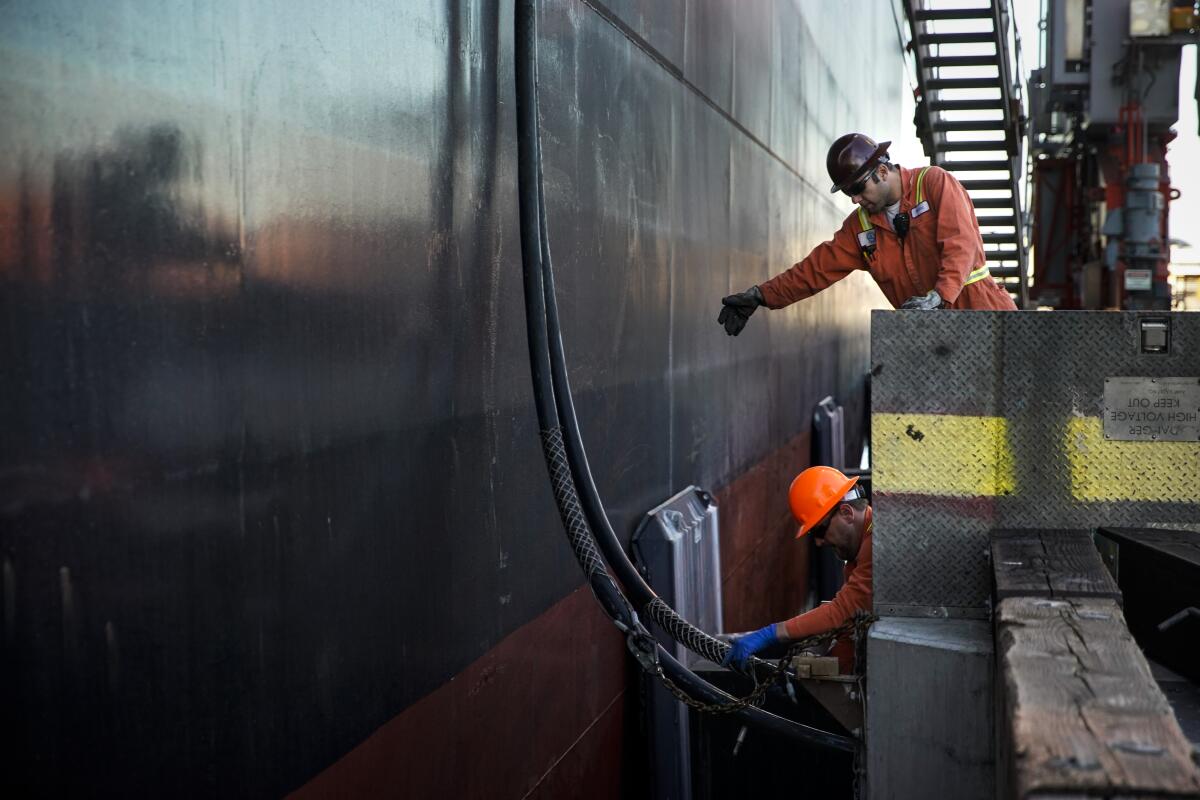
The L.A. and Long Beach ports, which have spent hundreds of millions of dollars building outlets and other electrical infrastructure since they introduced shore power in the mid-2000s, have echoed industry concerns.
Heather Tomley, managing director of planning and environmental affairs for the Port of Long Beach, said the port supported moving forward with additional emissions controls. “But we also need to be realistic about the timeline that it will take for these technologies to develop and be proven, and for the infrastructure to be installed,” she said.
The state estimates it would cost industry $2.16 billion over the next decade to comply with the new rules, resulting in health benefits valued at $2.25 billion, including the avoidance of hundreds of early deaths from air pollution. Air Resources Board staff plan to bring the final regulations to the 16-member panel for a final hearing in the spring.
Diane Takvorian, an Air Resources Board member who directs the Environmental Health Coalition based in the San Diego area, says further reductions from ships in port are critical because they are among the biggest pollution sources affecting the state’s most disadvantaged communities.
“This is a historic step and a big step,” she said.
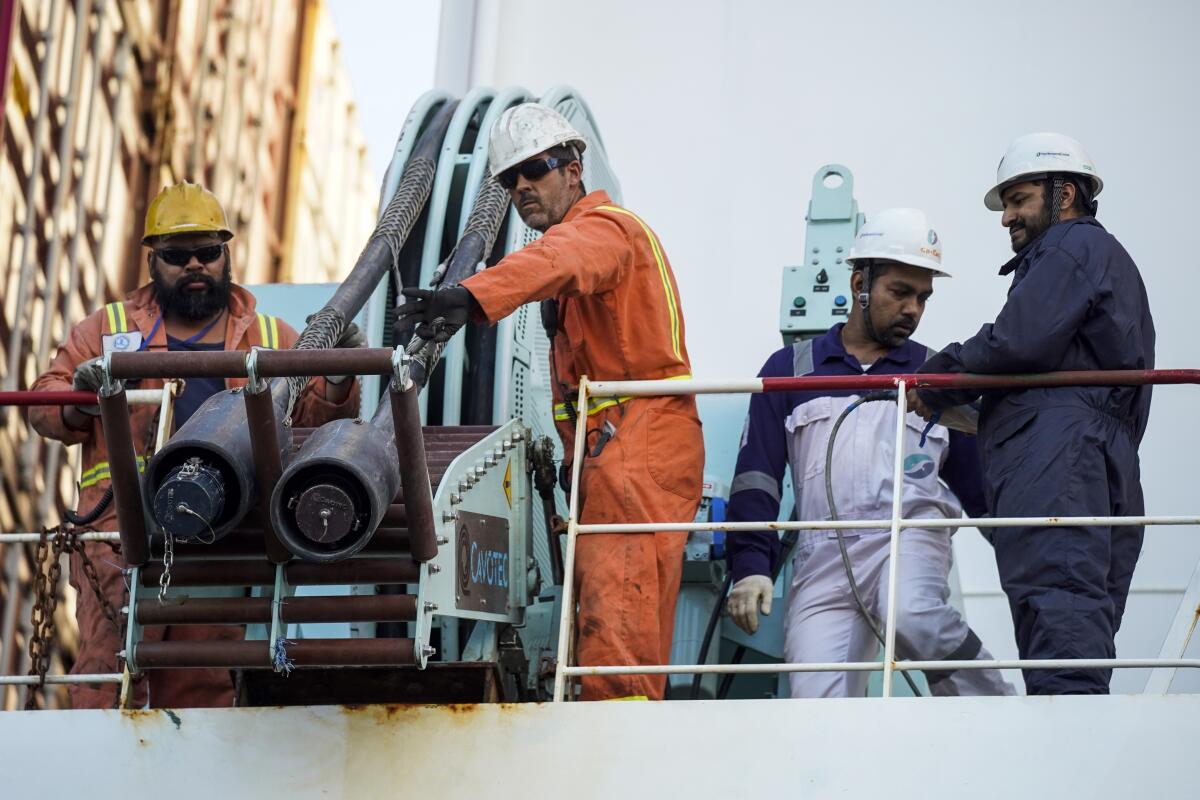
Enforcement wanted
In harbor-area communities, neighborhood groups that want tougher pollution restrictions remain skeptical that new rules will be backed up with tougher enforcement, pointing to a history of noncompliance with ship plug-in requirements at the Port of L.A.
In 2015, the Los Angeles Times revealed that the port had privately rolled back pollution-cutting measures at the China Shipping terminal, giving the company permission to violate shore power requirements starting in 2009. In 2016 the port released an audit showing it also failed to meet pollution-reduction requirements at the TraPac terminal, including mandates that ships plug into shore-based electricity.
Last month, the Air Resources Board announced Shanghai-based shipping giant COSCO Container Lines had paid $965,000 in penalties after a state audit of its fleet’s visits to the ports of L.A., Long Beach and Oakland discovered 2,600 violations of the shore power rules from 2014 to 2017.
“This is a resistant industry and it needs policing and auditing,” said Warren of the San Pedro & Peninsula Homeowners Coalition. “If you’re going to make the rules stricter, you need to make the enforcement stronger too.”

More to Read
Sign up for Essential California
The most important California stories and recommendations in your inbox every morning.
You may occasionally receive promotional content from the Los Angeles Times.










